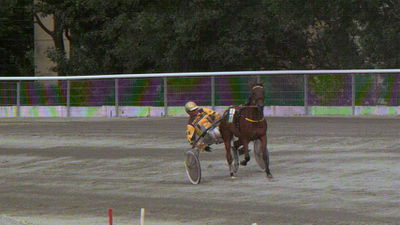Difference between revisions of "AXIOM Beta/OLPF"
m |
|||
| (3 intermediate revisions by 2 users not shown) | |||
| Line 5: | Line 5: | ||
[[File:Moire_fence_example.jpg | 400px]] | [[File:Moire_fence_example.jpg | 400px]] | ||
For a filter to be effective and also not excessively blur the image, it needs to be designed for a specific sensor pixel size. The Cmosis CMV12000 and CMV2000 have the same pixel size (5.5µm) | For a filter to be effective and also not excessively blur the image, it needs to be designed for a specific sensor pixel size. The Cmosis CMV12000 and CMV2000 have the same pixel size (5.5µm). | ||
Filters of different thickness and refractive indexes placed between the back of the lens and sensor will shift the back focus | Filters of different thickness and refractive indexes placed between the back of the lens and sensor will shift the back focus a bit. The AXIOM Beta Compact Optical Filter Holder design compensates for this. | ||
OLPFs are available with and without UV/IR coating. | |||
Design considerations: | Design considerations: | ||
* IR/UV filters might also introduce a color bias which would need to be corrected as part of the camera calibration process | * IR/UV filters might also introduce a color bias which would need to be corrected as part of the camera calibration process | ||
A [https://twitter.com/apertususer/status/848584997388812289 Twitter poll] was run to get user feedback. Question; "How important is an Optical Low-Pass Filter (OLPF/AA-filter) for you?". Results on 2017-04-06; | A [https://twitter.com/apertususer/status/848584997388812289 Twitter poll] was run to get user feedback. Question; "How important is an Optical Low-Pass Filter (OLPF/AA-filter) for you?". Results on 2017-04-06; | ||
| Line 33: | Line 30: | ||
Research is being conducted in the Labs here - https://lab.apertus.org/T127 | Research is being conducted in the Labs here - https://lab.apertus.org/T127 | ||
[[Category:AXIOM Beta]] | |||
[[Category:Software]] | |||
[[Category:Development]] | |||
[[category: Research Pending]] | |||
Latest revision as of 14:46, 20 December 2020
Optical Low-pass Filter (OLPF)
An optical low-pass filter is used to reduce/eliminate moire and aliasing artifacts which would otherwise be visible when filming some types of subject matter (detailed repeating patterns like meshes, grills, brick walls). Although post-production workarounds exist, they aren't usually as effective and remnants of moire will often remain.
For a filter to be effective and also not excessively blur the image, it needs to be designed for a specific sensor pixel size. The Cmosis CMV12000 and CMV2000 have the same pixel size (5.5µm).
Filters of different thickness and refractive indexes placed between the back of the lens and sensor will shift the back focus a bit. The AXIOM Beta Compact Optical Filter Holder design compensates for this.
OLPFs are available with and without UV/IR coating.
Design considerations:
- IR/UV filters might also introduce a color bias which would need to be corrected as part of the camera calibration process
A Twitter poll was run to get user feedback. Question; "How important is an Optical Low-Pass Filter (OLPF/AA-filter) for you?". Results on 2017-04-06;
- 42% 'not important'
- 32% 'quite important'
- 26% 'essential'
So a combined 58% of users opted for either quite important or essential.
List of possible manufacturers:
http://www.optics-online.com/lpf.asp
http://www.made-in-china.com/manufacturers/olpf.html
http://www.made-in-china.com/showroom/eddiet1716/product-detaileqjxuOYMYJfA/China-Optical-Low-Pass-Filter-OLPF-.html
http://www.made-in-china.com/showroom/refet88/product-detailRMtJbgsUhDky/China-OLPF-Crystal-Filter.html
http://www.made-in-china.com/showroom/jiujonshane/product-detailBMKmSRtdEbcU/China-Olpf-Optical-Low-Pass-Filter-.html
Research is being conducted in the Labs here - https://lab.apertus.org/T127
